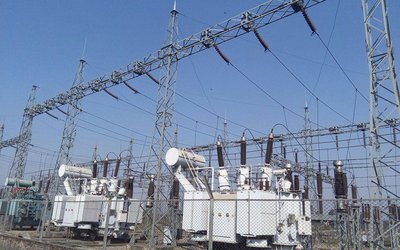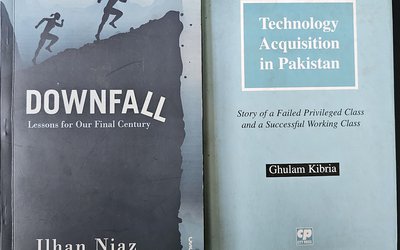Situated between two giant rivers, Bidur Municipality looks like it’s been struggling hard for water for decades, but why this paradox?’ Eszter’s curiosity represented our collective feeling while visiting Bidur for the first time in May 2014. We were in Bidur as a team of researchers from the University of Cambridge and Southasia Institute of Advanced Studies to initiate a study on the political economy of water security in small towns of the Himalayan region. Indeed, every one of the team had the same question in mind after finding the Trishuli and Tadi Rivers on the two sides of scenic Bidur Valley, which serves as the district headquarters of Nuwakot. In our subsequent visits, we met public figures, government officials and members of Bidur Water Supply Management Committee, amongst others. Although a satisfactory answer remains elusive, we did find clues to offer an interesting analysis.
Unreliable water: Surrounded by perennial Trishuli and Tadi rivers, Bidur also has scores of other spring sources. Diverting water out these big Himalayan rivers for municipal purpose means a mega scale project of multi million dollars, which is out of reach of Bidur or Nuwakot. The other local sources are too small to meet demands beyond four months of rainy seasons. Current supply comes partly from monsoon springs and partly from the irrigation canals fed by Trishuli. The monsoon floods often damages the intakes and pipelines, disrupting the supply for a couple of days to weeks. Quality issues are no less serious than the quantity of supply as there are no treatment facilities in the system.
Bundling many into one: Bidur Municipality has over a dozen water users committees that manage one or more sources. Since 1995, efforts have been made to build an integrated municipal supply system under the community-led management of Bidur Drinking Water and Sanitation Users Committee that comprises approximately 2000 households (approximately 40% of households in the town). The supply system taps multiple sources, with pipelines to collect water into its reservoirs and then to distribute among individual households, along with some public taps for limited hours in a day. However, building and operating an integrated drinking water supply system has proved incredibly challenging despite decades of long efforts.
Pending maintenance works: The town received municipal water supply systems some three decades ago and is under the management of a community elected committee. A dedicated water management team is in place for the operation and maintenance of the system. Yet, water scarcity is the key concern of Bidur residents. The old supply system is already in need of major repairing and maintenance. Growing demands of connections through the old supply lines have piled pressures on the existing systems. Narayan Khanal, the chair of the Bidur Water Supply Committee, claims that a significant improvement in Bidur’s municipal supply is not possible without expanding the system that requires tapping the mighty Trishuli.
ADB to finance Bidur Water Supply Scheme: Recently ADB and the Nepal Government endorsed a proposal for Bidur Municipality to build a new intake system and pipelines. This involves a complete restructuring of the existing physical and management system. The indicative size of this new scheme would be over NRs 600 million and likely to be completed by 2016. However, not all the fund comes in grant form, but is a mixed bag of loans and grants towards which the Bidur residents have to agree to pay their share. This requires new tariff provisions and a strong functional management team.
Ghost of Battar Lift Irrigation Project: Built in the early 1980s, the Battar Lift Irrigation System (BLIP) stood as a symbol of pride and prosperity of Bidur until it collapsed and ceased operating in the mid- 1990s. Then the largest project in Nuwakot District, it was expected to transform the socio-economic status of Bidur residents. Built by the then Government of Nepal, the BLIP system used to pump out water from Trishuli to irrigate some 700 ha. However, the system proved unsustainable mainly as a result of its high operation and maintenance costs. An official of the Nuwakot- based Irrigation Division informed us that a key reason behind the failure of this system was its huge operation costs as the monthly electricity bill alone exceeded Rs 700,000, and farmers declined to pay a ‘fair share’ of the bill. A local farmer Shiva Prasad Gajurel from Piplatar termed this brief period as a ‘golden time’ when the parched land produced a variety of vegetables and crops round the year before it turned back to the current state of aridity. Once a symbol of pride, Bidur residents see the failed BLIP system as a grave from where a ghost of development failure still haunts them. Development project comes as a gift: There are scores of local leaders who give credit to the then King Birendra for gifting the BLIP to Bidur, which made significant contributions towards enhancing agricultural productivity with a promising prospect of raising living standards for Bidur farmers. However, the current struggle of Bidur residents for water sits oddly with the prominent standing of Nuwakot leaders in Nepal’s political landscape. For example, in the last three decades, there has hardly been a time without a cabinet minister from Nuwakot in Singhdurbar- the secretariat of Nepal Government. This may be why Bidur has received a number of gifts as development projects from its leaders in Kathmandu which have largely been focused on improving and investing in road networks but not around meaningful improvements to water supply.
A few points of caution
First, Competition over ownership of spring water sources are growing elsewhere in Nuwakot, although the district is known for being rich in water sources. Conflicts over water sources are between drinking water user groups and small and poor farmers as well as demands for drinking and water use from distant settlements. In a recent interaction program held in the Meeting Hall of Bidur Municipality, a poor farmer from an upstream village said in his trembling voice that their water has been taken away (for drinking), leaving behind no water for them to save their seeds in his field close to the water source.
Second, for sustainable and quality supply of water, it is essential to invest a portion of revenue in the critical water zones in upstream areas. This in turn helps to establish a good cooperation and collaborative relationship among the riparian stakeholders. Third, in the context of changing climate and weather patterns, building knowledge on local hydrological and meteorological databases and changing patterns of water demands is critically important. Such information also helps build consensus and cooperation among stakeholders in decision- making processes.
Fourth, a prominent challenge to managing water supply is how to address the conflicts over competing demands of water from sources. In rapidly urbanizing towns, irrigation and other water needs (such as watermills) are critical livelihoods issues to the local farmers as they aspire to benefit from growing markets for their products. Finding alternative solutions to the undermining of the voices and needs of small and poor farmers who depend on the local water sources is required, when the same sources are tapped for the provision of drinking water to growing towns. There exists a delicate balance in Bidur and elsewhere in Nepal.
Fifth, there is a tug between the municipal and irrigation needs of Bidur. In this context, the new water supply project could be more economical and sustainable if the proposed scheme could be redesigned to meeting irrigation needs as well. The rationality lies in making one larger intake from the Trishuli for meeting the dual purposes of municipal supply and irrigation. In turn, irrigation canals passing through the municipal areas would also reduce demand of household supply (for house gardens, cleaning, and cattle feeding).
The situation of Bidur provides a striking example of why a region is running into difficulties with turning itself into a prosperous region despite having abundant natural resources such as water. This resembles with a popular rhetoric like ‘Nepal is rich in water resources’ against the ground reality that a vast majority of towns and villages suffer from poor supply of water, and, hydroelectricity.
Dahal works with South Asia Institute of Advanced Studies. He can be reached at ngamindra@gmail.com
- Struggle of a Small Town for Water
- Nov 08, 2014

















